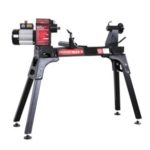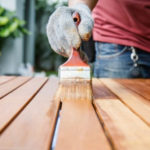Pens are a writer’s instrument, but they can also be an aspiring artist’s tool. They provide the ability to create pictures and write notes on paper with an individuality that few other instruments can supply.
It always amazes me how many different types of pens there are for all sorts of purposes. Recently, I had the opportunity to try out a wood-burning pen and found it to be just as good as any ordinary pen or better in some ways.
For artists who do not own power tools or don’t want to make one by hand, you would probably feel that this is the perfect type of pen for you.
As with other crafts, artists use different styles to enhance their artworks, and woodburning pens allow them the freedom to do so. With the right set of instructions and some practice, you can turn your next pen project into an ongoing hobby that will shed new light on the standard idea of what a pen is supposed to do.
Safety Considerations
The most important thing to keep in mind while building or making a wood burning pen is safety. A woodburning tool works at a temperature that is several degrees hotter than an ordinary soldering iron.
This means that melted plastic will drip if accidentally applied to it, and this causes burns just like any other hot liquid does. Gloves with heat-proof material are strongly advised for handling heated parts and for holding the plastic as it cools down.
If not used correctly, these tools could cause serious injury, so be careful when working with them.
Step 1: What Type of Handle
The first step to making a pen is deciding what type of handle you want. Since the intention is that this tool will be used for artistic purposes, having an ergonomic grip and a comfortable feel in your hand can make it easier to use when practicing and drawing pictures.
A more common option typically has two holes drilled through either side so a cord or chain could be attached through them.
Another interesting possibility would be drilling one hole on each side with only one extending all the way down to the tip of the pen handle. This provides an attractive option for attaching gems or other decorations on both sides without disrupting the smooth lines of its shaft.
The third choice may seem like it was not intended as a design, but screwing together three separate pieces of wood can yield a unique and interesting look that is hard to duplicate with other forms of construction.
Step 2: What Type of Wood
If you are planning on burning words or pictures onto your pen, it would be wise to choose a type of wood that will provide a smooth finish for this last step while still being sturdy enough to handle.
The two most common choices for constructing the body of these tools are either oak or ebony. Oak has been used for many years as an inexpensive option for sculptors and carvers because it is easy to carve into detailed designs.
Equally important, it also tends to leave fewer splinters behind from carving than softer woods do.
Ebony is conversely known for its durability when in contact with heat sources such as holding the actual tip. It is also known as a good choice for writing utensils because it is strong and provides a smooth finish that is great for burning into.
Step 3: What Type of Tip
The last question to answer before beginning the project will be what type of tip you want your tool handle to have. A metal casing inside of the wooden shaft will allow it to cool quickly while keeping the wood from being burned through completely.
The metal casing can come in many sizes, depending on how thick you would like the tip to be. Most commonly found are silver cone tips made either from steel or stainless steel, which are available at most jewelry supply stores.
You can also get brass plated tips with a wide variety of shapes and types of designs that reflect an individual artist’s desire for a unique appearance.
Having a wide variety of tips available to choose from and the ability to change them out as you see fit will amplify your options for artistic expression.
Another possible option would be to use something like a soldering gun for heating the tip-up. This method would allow you to directly hold the plastic in place while using glass-head oil-based pens.
It may not take away any worries about getting burned by melted plastic, but it certainly seems safer than holding hot pen parts with your hands during this step. Placing too much pressure on the tip will eventually cause it to break off though, so make sure that you are holding it appropriately before turning on the heating element inside of it.
Also keep in mind that different types of plastics require different amounts of time for them to heat up, so keep an eye out for any sudden changes in the plastic’s flexibility.
Step 4: Adjust the Temperature
The last finishing tip is that it is generally best to begin burnishing while the plastic is still warm and let it cool down as you continue before reseating everything back together again.
This may seem counter-intuitive because you are not adding heat (and possibly cracking your work), but this method tends to provide a much cleaner final product because there will be less chance of air bubbles accidentally being filled into blemished areas of your design.
Conversely, heating up too much at once can cause unintentional burns or dings on your pen.




